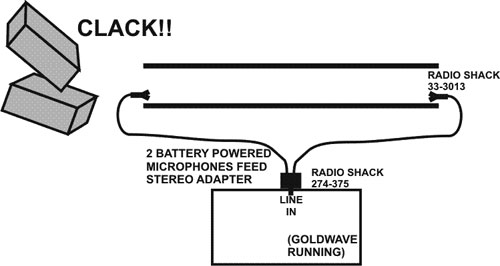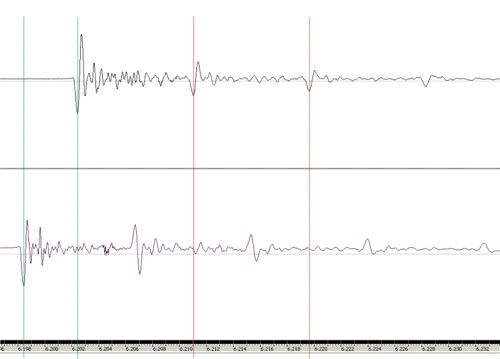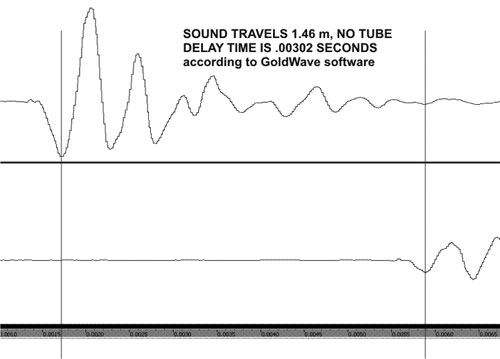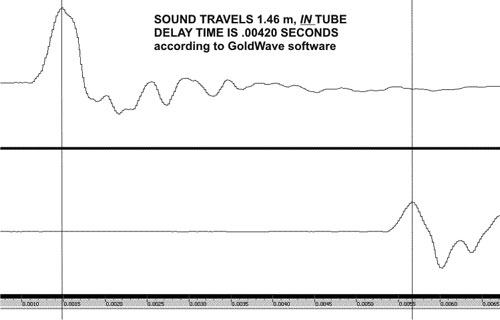Experiment of The Month
Indoor Sound Velocity Measurement
A previous experiment describes a simple outdoor sound velocity measurement. The distance traveled by the sound was an

In the experiment, two blocks of wood are clacked together. We use pieces of "2x4" lumber, and drive the corner of one into the center of the other to produce a short pulse of sound, with no noticeable pitch. The data shown here were taken by music major Jasmine Morrow.
The sound is detected by two microphones and recorded as the right and left channel using a Y-adapter which couples two monaural plugs to a single stereo plug. GoldWave is set to record stereo. In our data, the microphone nearest to the blocks was recorded on the left channel, which appears in the graphs as the lower half of the figure. The microphone nearest to the blocks faced away from them, to avoid overload.
The figure above shows a cardboard tube, 145cm long, and 7.5cm in diameter that was used to guide the sound to the distant microphone. The figure below shows the acoustic recording by the GoldWave program.

The time axis is in seconds of recording. The green lines mark observed time between the first left and the first right pulse is .004 seconds, giving a velocity of 363 m/sec, higher than expected.
The red lines mark the round trip time for pulses striking the right microphone. At .0086 seconds, it is significantly longer than 2x.004=.008 seconds. We take this as evidence that the tube "plays long," meaning that air rushes out of the tube a short distance (about 1 tube diameter) before the boundary condition (pressure = 1atm) is satisfied.
Exactly one inversion is shown in the figure above. It occurs at the left microphone, on the first reflected pulse, which is inverted from the initial driving pulse. The pulse inverts upon reflection at each end, so an even number of reflections produces no observable inversion.
This measurement is sensitive enough to discern the fact that sound travels slower inside the tube than out. We improved on the estimate of distance by taping the two microphones to a

We clack the blocks for two different cases:
- No tube present
- 2-meter stick threaded inside the tube, with a microphone just outside of each end of the tube.
The results are shown in two figures below:


The velocities calculate to
372 m/sec for no tube and
348 m/sec for sound traveling in the tube.
The free air value is inaccurate due to inaccuracy in the computer time measurement. Using an oscilloscope with the same microphone pair separation, we measure 348m/sec for the no-tube case. We expect a similar reduction in the speed of sound in the tube.
-
Contact Information
Contact Number: 717-871-4297
Email: physics@millersville.edu